White Stair Risers vs. Wood: Features, Differences, & FAQ (With Pictures)
-
Pete Ortiz
- Last updated:
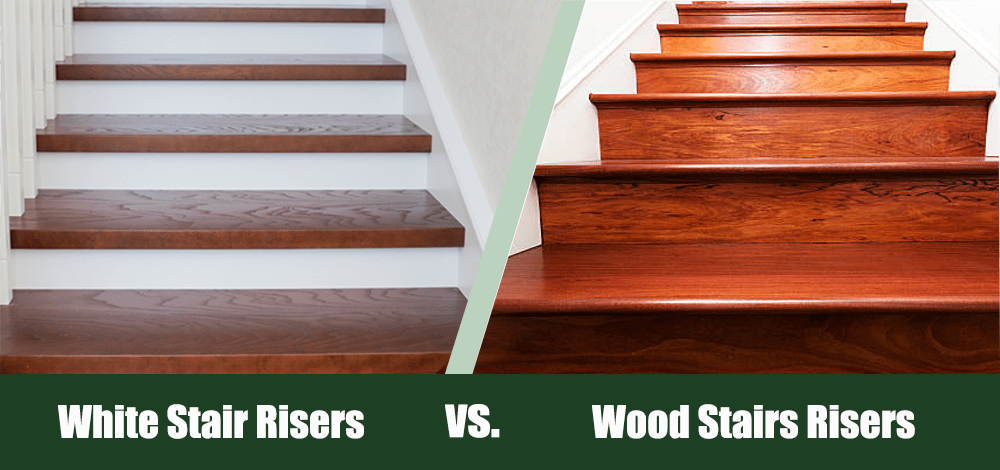
Whether your staircase is located off the entryway or right in front of your foyer, stairways are the first thing visitors see when they walk into your house. They help set the tone of your home. A few years ago, almost all stairways featured the same old stained wooden staircase and a carpet or runner. Today, people are utilizing their design freedom to come up with stair riser decals to make bold statements in their homes.
To help you match the stairway with the surroundings to complement the rest of your home, use either wood or white stair risers on your stairway. White stair risers combined with a wood tread can give your home a traditional, stately, and formal look. The white color on the risers offers a good contrast between the white paint and the wood tread. On the other hand, typical wood risers give a home a more rustic and casual look. Wood risers are significantly easier to maintain and are ideal for areas with heavy foot traffic.
Your choice will ultimately depend on your personal preferences. This article will discuss the features of both wood and white risers. We will also look at the advantages and disadvantages both offer and which one is ideal for your home situation. Read on to learn more.
Overview of White Stair Risers
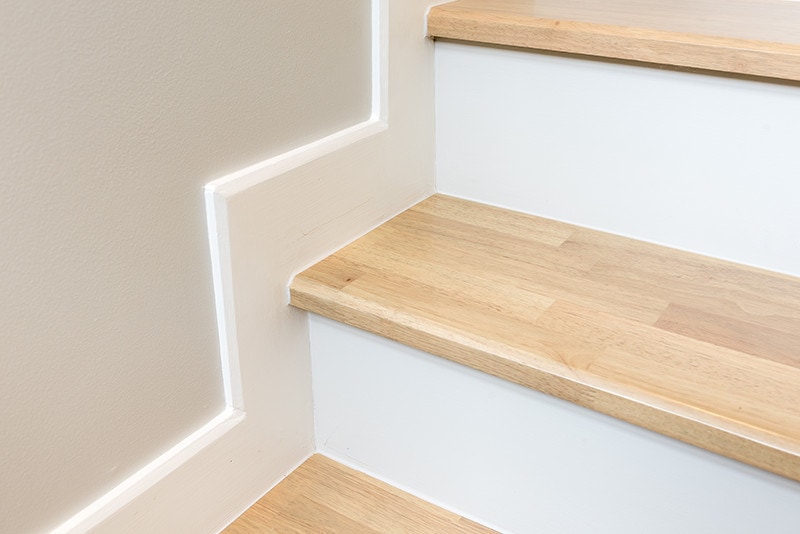
Every single stair in a stairway is made up of two parts: a stair tread and a riser¹. A stair tread is where you place your foot as you climb up a stairway. The vertical back pieces of the stair make the stair riser. However, some stairways such as those used outdoors lack an open back and do not have a stair riser.
Just like treads, the size of the stair riser is important for safety purposes. When risers are installed too high, it can be challenging to climb up or down the stairway. This also poses the risk of pets, kids, and seniors falling down the stairs.
Usually, stair risers are painted white to create a color contrast with the paint on the walls. However, the paint has to be high-gloss and able to withstand scratches and stains. Granted, white risers may not show blemishes as much as other colors, but over time, they get dirty too. So, regularly clean them to maintain their glossy look.
- White risers highlight the natural color of wood on the tread.
- They make the surrounding walls and the staircase look spacious.
- They brighten up a poorly lit hallway.
- They can help underscore darker surroundings or a dark stain tread.
- Can give a home a formal or traditional look.

Overview of Wood Stairs Risers

Most traditional staircase designs feature wooden stair risers. Wood stair risers can help improve the tone of a room and provide that luxurious refined feeling. Each piece is customized to your specifications and can produce a sturdy stairway with the natural beauty of a wooden staircase.
Both soft and hardwoods can be used as flooring materials. However, they need to have a Janka Score rating. Janka scores are essentially a unit of measurement of how much weight a material can handle before getting damaged. When building a stairway, your risers and treads should have materials that can handle the weight as they are stepped on. So, your wood risers should have a high Janka score rating.
- They are suitable for installation in high-traffic areas of your home.
- Wood risers offer the option of choosing a style, type, and design of your staircase and wood flooring to match your individual style.
- You can use a variety of wood options for your wood riser including pine, oak, poplar, and maple.
- They work best when you want to give your home a more casual look.
- When wood treads are used with wood risers, they can match the color and material of hardwood floors.
The 4 Types of Wood Used in Stairway Risers
1. White Oak
White oak is one of the most expensive woods used for flooring. Not only does it give a stairway a beautiful finish, but the wood can also last for years without deterioration. It is also strong and capable of handling heavy loads, which is an important support aspect in stair risers.
In addition, white oak doesn’t shrink or warp and after sanding, it gives off a polished finish. While it is possible to paint oak wood risers, it is very challenging to work with, and you need to be extra cautious while handling the wood.

2. Poplar
This lightweight and versatile hardwood offers great support for stair treads and risers. Unlike oak, this wood is also paintable and is very easy to color. Even though it may be cheaper than the other wood species on our list, it can retain paint better.
Additionally, poplar doesn’t easily decay and can be shaped using a saw, router, or lathe tool. Just ensure your work tools are sharp enough to handle the job. Otherwise, poplar will tear apart if blunt tools are used on the material. It can also sustain dents if kicked.
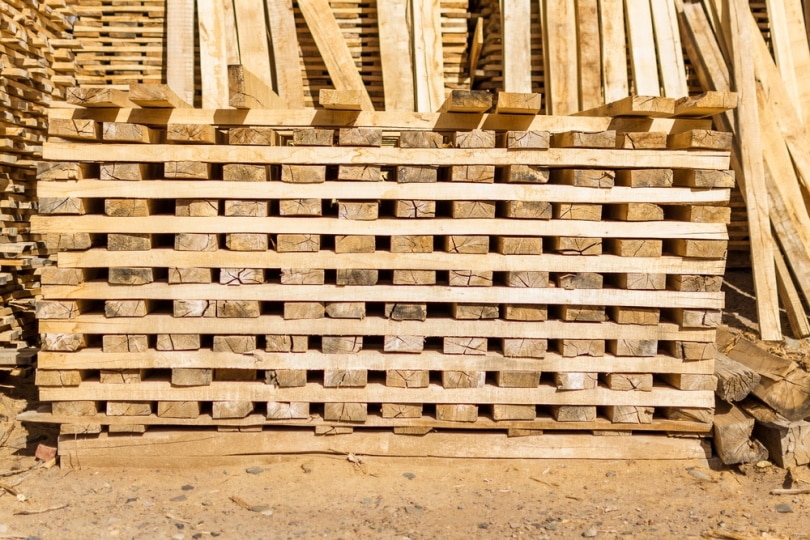
3. Hard Maple
If looking for color options when painting your stair risers, hard maple is the way to go. It is very strong and not susceptible to damage. It is even considered the strongest wood variety among our four options in some circles, so you need not worry about your stairs being imbalanced.
Hard maple is available in several colors, so you don’t necessarily have to paint them to match the color of your surroundings. Yet, if painted, they can hold the paint just as well. After sanding, you can expect fine and precise results that you can rely on for many years. Hard maple is also very expensive due to its durability and easy-to-clean properties.
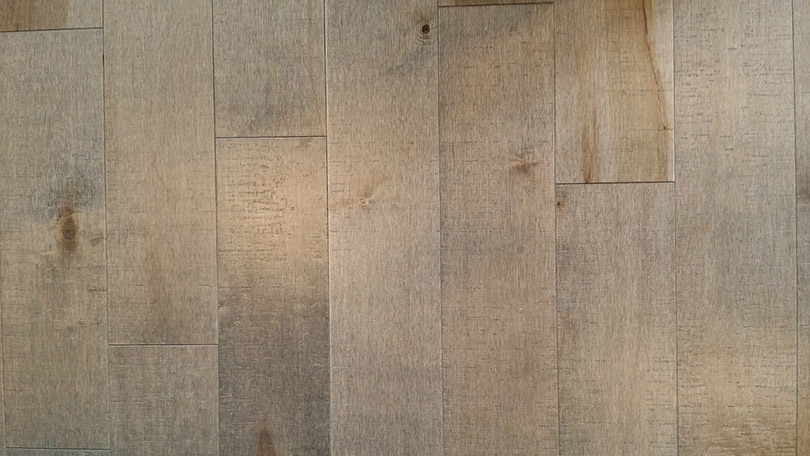
4. Pinewood
If you are strapped for cash but still need a decent and durable stairway for your home, pinewood is an ideal option. A softwood variety, pinewood is very versatile in application. You can shape or cut the material in whichever way you desire and still get a good finish. It is also the most commonly sold wood for stair risers.
The main drawback of using pine wood for flooring is that it can easily get dented or scratched. So, when working with wood and deck screws, you must be very cautious. The dents and scratches can destroy the aesthetic appeal of pinewood over time. Fortunately, you can fix this with regular painting.
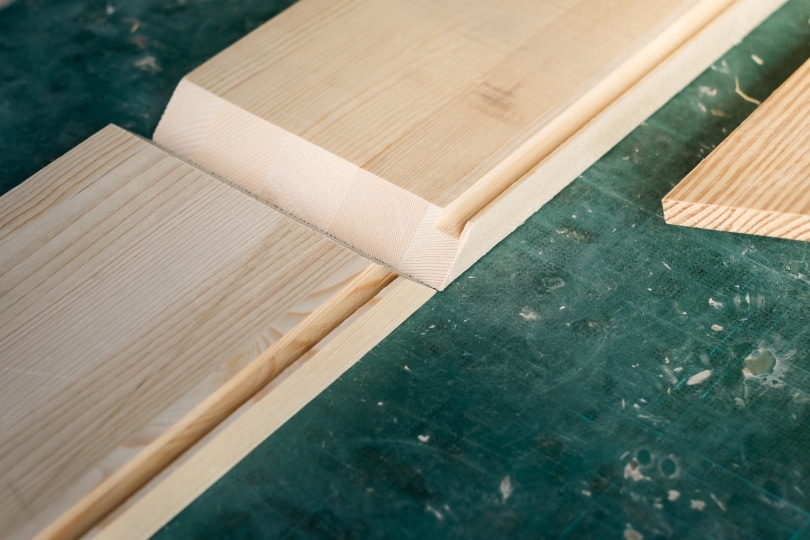
 White Risers vs. Wood—What Performs Better?
White Risers vs. Wood—What Performs Better?
Before we answer this question, you first must determine how much time you intend to spend maintaining your stairs.
White Risers
As earlier mentioned, white risers give a home a formal look. However, there are some disadvantages that you need to consider before choosing white risers for your stairway.
Perhaps the biggest disadvantage of using white risers is the formation of scuff marks. Though rare, people can accidentally kick stair risers as they maneuver through a stairway. These marks are very noticeable especially on the white paint on the stair risers.
Since stairways are the first fixtures most people notice in a home, the scratch marks will give your home a dingy and poorly maintained countenance. To prevent scuff marks on white risers from embarrassing you in front of your guests, you need to delegate more time to clean your stairway. You can also touch up the paint on the riser more frequently than on regular wood risers.

Wood Risers
Wood risers may give your home a rustic look and are cheaper and easier to maintain, but they also present pros and cons. The main advantage of wood risers is that they are suitable for high-traffic areas because of their sturdiness. Also, you do not need to worry about scuffing your stair risers.
On the other hand, wood risers are more difficult to remove and replace than it is to paint on white risers. On matters of style and design, wood stair risers can go out of trend very quickly.
 Frequently Asked Questions
Frequently Asked Questions
What color should stair risers be?
Most people would rather paint the stair risers with a contrasting color to that of the treads. Others prefer matching the colors between the stair treads and the riser. However, your choice will depend on what color you would want your stairway to have.
Are stair risers installed at a specific angle?
Yes, indeed they are. Stair risers should only be installed at a 90-degree angle for support and safety purposes. The only exception is if you have stone or concrete steps.
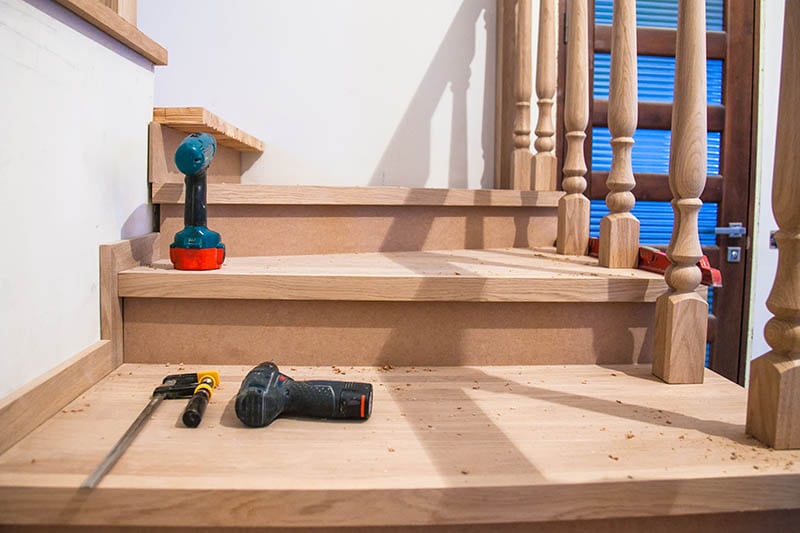
Can you protect the stair risers from scuff marks?
Yes, you can. You need only coat the underlying paint on the risers with clear polyurethane because it is scuff resistant.
 Conclusion
Conclusion
While white risers are visually appealing and can give your home an elegant look, they are not a suitable choice for the high-traffic areas of your home. If installed in a busy stairway, you will be forced to constantly clean the scuff marks or repaint the risers—an energy-consuming and time-consuming exercise.
Wood is a much better choice for busy sections of your home because they are sturdy enough to support stair treads and their framework. However, it is easier to repaint white stair risers than it is to remove and install wood risers. Your final choice will depend on what riser matches the rest of your home and your lifestyle.
Contents

